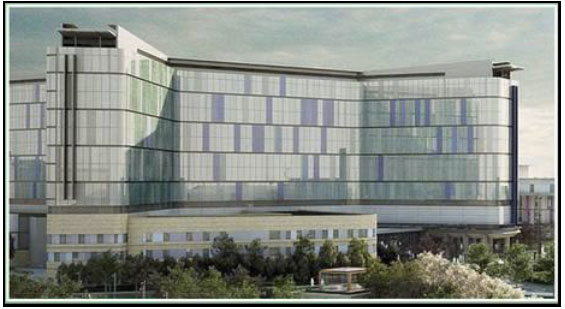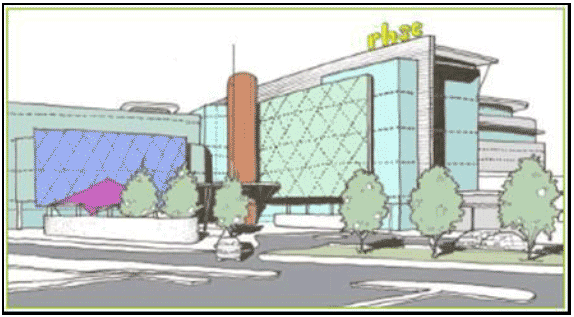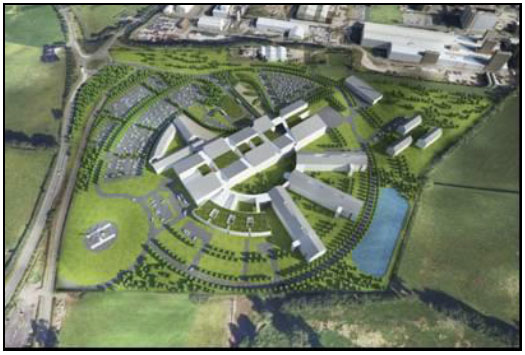Annual State of NHSScotland Assets and Facilities Report for 2013
A review of asset and facilities management performance in NHSScotland, identifying the current state of the estate and facilities management, highlighting areas of best practice and areas for improvement.
6.0 Delivering NHSScotland's 2020 Vision
Getting the right assets and facilities services in place will be central to achieving the Scottish Government's "2020 Vision" for sustainable high quality in health. Delivery of this vision will require major change to the type and distribution of facilities and the way in which future investment is prioritised across all asset groups.
The significant capital and revenue based investment plans described earlier in this report already form a key part in the delivery plans towards the 2020 vision, by focussing on improved quality in health and care services and a commitment to pursuing the three Quality Ambitions of safe, effective and person centred care, as set out in NHSScotland's Quality Strategy.
6.1 Realising the benefits from Property Asset Investment
Three of the most significant property asset investment plans over the next 5 years involve the completion of the New South Glasgow Hospitals project, the development of a new Royal Hospital for Sick Children in Edinburgh, and the re-provision of Dumfries & Galloway Royal Infirmary. Together they amount to a future investment programme of over £800m (this excludes investment already spent on South Glasgow Hospital).
These three investments alone will replace over 300,000 sq.m. of outdated accommodation; replace buildings in poor physical condition, reduce estate backlog maintenance risks and significantly improve the functional suitability and space utilisation of the NHSScotland estate. This investment will also deliver on the triple aims of the 2020 Vision by providing modern facilities that improve the quality of care provided, support the ability to improve the health of the population, and help to secure value and financial sustainability of health and care services.
The following summarises some of the opportunities and benefits to be realised for the Scottish population from these substantial property investments.
New South Glasgow Hospitals project

The new South Glasgow Hospitals project is on track to be delivered on time and on budget at the beginning of 2015. This £842m publicly funded 'super campus' is the largest single NHS hospital building project undertaken in Scotland and will deliver what is regarded as a gold standard of healthcare; with maternity, children's & adult acute care, and laboratory services all together on one site for the first time in Glasgow. The project has also had a major impact on the local community in terms of jobs, business opportunities and regeneration; with 460 jobs created and a further 196 work experience placements.
The new development forms a critical part of NHS Greater Glasgow & Clyde's clinical strategy which will change the way it delivers patient care aimed at better meeting patients' needs in a more sustainable, higher quality and safer manner. Overall, it will improve patient access and outcomes, as well as introduce more effective approaches to service delivery.
The completion of the new South Glasgow Hospitals project will deliver approximately 225,000 sq.m of new property assets, along with associated new medical equipment and IM&T infrastructure. This will enable the decommissioning of redundant properties resulting in the decommissioning of circa 243,000 sq.m. This transformation in the asset base includes a reduction in backlog maintenance of £25m and significant improvements to the Boards KPIs, post implementation in 2017:
- Percentage of properties in good physical condition will increase from 76% to 91%.
- Percentage of properties providing good quality accommodation will increase from 45% to 74%.
- Percentage of properties providing functionally suitable accommodation will increase from 50% to 71%.
- Percentage of properties fully utilised will increase from 72% to 88%.
Royal Hospital for Sick Children in Edinburgh

This project will re-provide services from the Royal Hospital for Sick Children (RHSC), Child and Adolescent Mental Health Service (CAMHS) and the Department of Clinical Neurosciences (DCN) in a single building adjoining the Royal Infirmary of Edinburgh at Little France. It will deliver significant benefits of having children's, maternity and adult services on the same site, and the proximity to the University of Edinburgh Medical school and the BioQuarter will improve opportunities for partnership working and bring research to the bedside.
The existing Royal Hospital for Sick Children (RHSC) provides a comprehensive range of dedicated children's services, caring for over 100,000 children from across Lothian and beyond. The existing hospital is almost 120 years old and is in need of replacement with fit for purpose facilities, co-located with appropriate adult services, including maternity and neurosciences, to ensure clinical excellence can be maintained.
The project is expected to be complete during 2017/18 and will replace approximately 23,000 sq.m. of pre-1900's hospital accommodation, of which almost 50% is considered to be in unsatisfactory physical condition and with £11m of associated backlog maintenance.
New Dumfries Hospital

NHS Dumfries & Galloway are planning an ambitious agenda for change over the next 10 years which is focussed on redesigning and modernising its services whilst also addressing the current poor condition and performance of much of its existing estate. At the heart of this change programme is the reprovision of its main acute hospital facility, the Dumfries and Galloway Royal Infirmary (DGRI). This will deliver a modern, patient centred environment for acute services which will be underpinned by more effective use of locally based services.
The realisation of this project, along with the completion of the Board's 10 year disposal and refurbishment programme, will have a significant impact on the Board's overall backlog maintenance burden and estate performance. The replacement of the hospital alone will eliminate £41m of backlog maintenance directly associated with it, but the delivery of the full change programme by 2023 is further expected to deliver the following property KPI improvements:
- Percentage of properties in good physical condition will increase from 54% to 90%.
- Percentage of properties providing good quality accommodation will increase from 49% to 90%.
- Percentage of properties providing functionally suitable accommodation will increase from 54% to 90%.
- Percentage of properties fully utilised will increase from 45% to 90%.
Primary Care Developments
£0.33bn is also planned for new primary & community care facilities, and other smaller capital replacement schemes. This investment is key to "shifting the balance of care" and is expected to have a significant impact on delivering more patient centred, safe and effective care closer to home.
One of the schemes in this category is the Stirling Care Village, an innovative and integrated care model that combines primary & community healthcare with older people's care to create a joined-up holistic approach to service delivery. The project will result in the formation of a Care Village based on the existing Stirling Community Hospital site. To further enhance this Care Village model of service provision, General Medical Services delivered by local GP practices will become a key service partner within the development along with other service providers such as Forth Valley College, local charities and the voluntary sector, to deliver enhanced services as part of the overall concept.
6.2 Potential benefits from a strategic approach to Office accommodation
All NHS Boards recognise the importance of rationalising their estate to maximise efficiency and reduce unnecessary space and, over recent years, the Special NHS Boards have made significant progress towards this by maximising the utilisation of their office accommodation. This has been achieved through the introduction of new ways of working, flexible working and workplace redesign. In particular, NHS National Services Scotland (NSS) has done extensive measurement of space efficiency and costs across its own large and diverse office estate as part of implementing its Property & Asset Management Strategy which was focused on:
- Providing well designed and efficient space which is flexible towards embracing changing working practices and new technology
- Maximising the opportunity for staff to develop and deploy their knowledge, skills and personal qualities creatively to add value to the business and services
- Achieving synergies from shared use of accommodation and support services.
The Scottish Government, along with Scottish Futures Trust, will be supporting NHS Boards to develop strategic plans for their 2014 PAMS which consider the above opportunities for improvement, as well as further opportunities from the wider public sector office accommodation. This has the potential to bring about the following benefits:
- Provision of affordable support accommodation to the NHS that is better able to respond to future changes in strategic direction.
- Reduce current building performance issues, where they exist, on the current estate in terms of:
- physical condition
- space utilisation
- functional suitability
- Improve the quality of working environment and thereby facilitate the retention and recruitment of staff;
- Improve the availability of staff welfare facilities and promote positive staff morale.
- Providing flexible, well designed, efficient space that is able to cope with uncertainty around future property needs, support opportunities to change working practices, and introduce new technology.
- Support Scottish Government environmental sustainability agendas through the appropriate procurement, design and operation of its property assets.
- Maximise opportunities for staff to develop and deploy their knowledge, skills and personal qualities creatively to add value to the business and service provision.
- Enable more integrated/collaborative working and thereby encourage better use of skills and resources.
- Achieve synergies from shared use of accommodation and support services.
6.3 Potential benefits from a more strategic approach to investment in medical equipment
Medical equipment is a valuable asset both in monetary terms and in the important role it plays in the delivery of quality healthcare across NHSScotland, with modern standards of available equipment used to support better patient care and improved efficiency and effectiveness of service delivery. Current examples of this across NHSScotland include:
- The programme of investment in new radiotherapy machines has enabled advanced treatments to be delivered in less than two minutes; rather than the 15-20 minutes needed for conventional radiotherapy treatment, and are capable of treating in excess of 40 patients per day.
- Modern imaging equipment is now designed to keep radiation dosage to as low as reasonably achievable thus reducing the associated risks to patients and staff.
- Medical Equipment is integral to the delivery of keyhole surgery which has significantly reduced the length of stay in hospital for patients.
- Modern standards of medical equipment enables cataract surgery to be carried out on a day surgery basis resulting in improved service effectiveness, patient convenience, and patient safety.
- The total number of adverse incidents related to medical devices reported centrally in Scotland is 250 per annum. This number has been fairly constant over the past few years. Of that 250, only 40 are related to medical equipment (note: the actual causes of these incidents may not necessarily be the medical equipment itself).
There are, however, opportunities to improve the strategic approach to investment in medical equipment, and the support that they provide to patient care, such as:
- Sharing knowledge and learning from good practice investment models already in place for radiotherapy and imaging equipment. This has the potential to improve the effectiveness of investment decisions in other critical medical equipment.
- Developing strategic national advice of how medical equipment could improve healthcare prevention through better / more screening equipment and thus support reduction in hospital admissions.
- Provide further advice for the 2014 SAFR on appropriate life cycle replacement periods for different categories of medical equipment.
- Improving the accuracy of reporting on the value and performance of medical equipment through the SAFR pro-forma process.
- Introducing a harmonized database across NHSScotland of medical equipment that would improve the robustness of comparable performance data and support decisions on investment priorities and resources.
- Providing national advice on the introduction of new advances in medical equipment, and forecast growth areas, such as:
- Computerised devices and medical IT systems.
- Robotic surgical systems.
- Advanced imaging systems.
- Wireless products.
- Equipment associated with minimally invasive therapeutic procedures.
- Home and self-care products.
- Patient monitoring systems.
In order to take forward these opportunities, it is recommended that the SAFR Medical Equipment Group, along with other technical and strategic members, are initially tasked with investigating and reporting back on the benefits that could be gained from taking such an approach to the strategic management and investment in medical equipment. Progress on these investigations will be highlighted in the 2014 SAFR.
6.4 Realising the benefits from NHSScotland's eHealth Strategy
The potential of information technology to support and transform healthcare services is fully recognised across NHSScotland and eHealth has a pivotal role to play in ensuring that the 2020 Vision for Healthcare in Scotland and its Quality Ambitions are delivered.
The building blocks for future IT enabled progress are now in place following implementation of the eHealth Strategy for 2008-11, with eHealth now moving from an acquisition / development phase towards exploiting the value of the new capabilities acquired during 2008-11. The new eHealth Strategy 2011-17 is therefore a revenue based improvement programme, leveraging the IT assets to support the quality improvements that NHSScotland has committed itself to.
Progress in implementing the eHealth Strategy will be used within the SAFR domain as the basis upon which investment needs are better understood and priorities are recognised. The benefits to be gained from implementing the eHealth Strategy can then be more closely integrated with other NHSScotland investment priorities and decisions.
Contact
Email: Gillian McCallum
There is a problem
Thanks for your feedback